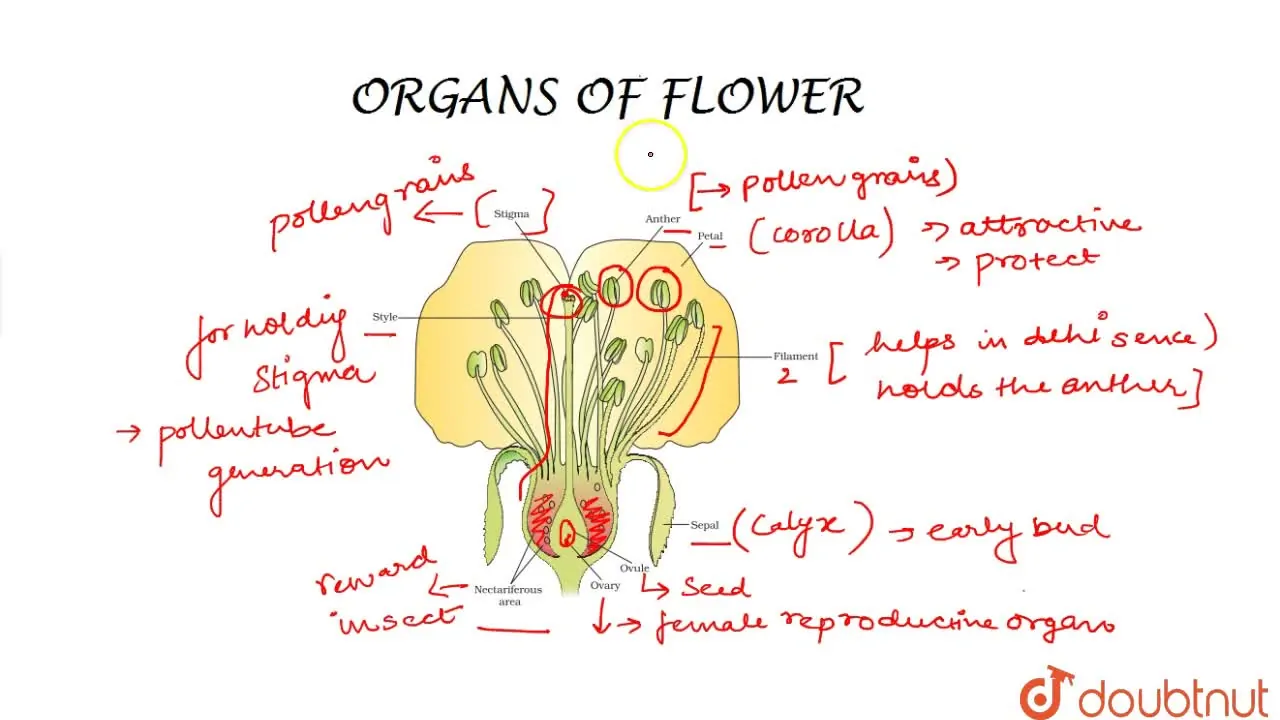Different Organs Of Flower
Different Organs of Flower
In this article, we are going to talk about and discuss one of the most important structures of a plant that is the flower we are going to discuss the different types of a flower and the different parts of a flower.
A flower may be a characteristic feature of flowering plants and is an extension of the shoot meant for the model. Flowers are attractive and appear in several colours and shapes to draw in pollinators who help in pollen transfer.
A flower is a modified chute, and the purpose of a flower is to help in sexual reproduction. All flowers are held by a stock which is known as the pedicel.
What is the function of the pedicel?
It positions of flower in such a way that it can help in the process of pollination by attracting pollinating agents. Pollination helps in the process of sexual reproduction. The flowers which have got medicinal properties, they are known as the penicillin flowers
A typical flower has four whorls or four different structure.

Related Videos:
Calyx
It is also known as sepals. The green leaf-like structures are the calyx or the sepals. Sepals form a protective layer around an unopened flower. Usually green in colour, sepals are the leaves that surround the area that is commonly referred to as the bud.
Corolla
It is also known as Petals. As depicted in the figure above, this layer lies above the calyx layer. The accumulatively layers of petals are known as the corolla.
Androecium
It is also known as the stamens. One of the simplest examples to depict androecium is an Oriental Lily. These lilies tend to possess anthers that are easily identifiable owing to the open nature of the lily flower. The anther is round and yellow-orange, and if you touch it, the anther leaves orange markings on your hands and garments. On insect-pollinated plants, the stamen is inside the flower. It tends to be stiff to permit insects to fly up against it to select up pollen. For wind-pollinated plants, the stamen is on the surface of the flower and quite loose. This enables the pollen grains to drop off and be carried by the wind.
They are involved in male reproduction, so they are the male reproductive organs of a flower. The stamens have two parts, including:
Anther
There is this red coloured portion which contains the pollen grains. It is located at the top of the stamen. It is liable for producing the pollen, which is transferred to the pistil or female parts of an equivalent or another flower to cause fertilization.
Filament
It is the stock which helps the pollen grains and the part which is long and tend toward anther.
Gynoecium
A collection of pistils is called the gynoecium. It is the female part of the flower.
Style
It is an extended slender stalk that holds the stigma. Once the pollen reaches the stigma, the structure starts to become hollow and forms a tube called the pollen tube, which takes the pollen to the ovaries to enable fertilization.
Stigma
It is often found at the tip of the design. It forms the top of the pistil. The stigma contains a sticky substance whose job is to catch pollen grains from different pollinators or those dispersed through the wind. They're responsible for starting the process of fertilization.
Ovary
They form the bottom of the pistil. The ovary holds the ovules.
Ovules
These are the egg cells of a flower. They're contained within the ovary. Within the event of successful pollination where compatible pollen reaches the stigma and eventually reaches the ovary to fuse with the ovules, this fertilized product forms the fruit. Eventually, the ovules become the seeds of the fruit.
Calyx And Corolla as Accessory Organs
Since calyx and corolla do not take part in the sexual reproduction, hence they are called the accessory organs.
In contrast to that, androecium and gynoecium are directly involved in sexual reproduction; hence they are known as the reproductive organs.
Perianth
A typical flower in which the calyx and the corolla are not distinct are called perianth.
So here the sepals and the petals sometimes they're found in a fused form where we cannot properly distinguish between a sepal that is calyx and a Corolla. S. these type of
flowers are known as the perianth.
Bisexual flowers
Flowers in which both the Androecium (male reproductive part) and the gynoecium (female reproductive part) both are present in a single flower, those kinds of flowers are called the bisexual flowers.
Unisexual flowers
If the flowers have either the male reproductive organ or the female reproductive organ, these are known as the unisexual flowers.
Bract
There is a structure known as the bract these are nothing but a reduced leaf-like structure which is present at the base of the pedestal or the stock of a flower.
Bracketed
The flowers which have got bract they're known as the bracketed flowers.
Ebracketed
The flowers which do not have bract are known as ebracketed flowers.
Important Chapters:

Similar Questions
Different Parts Of Flowers
View SolutionName different parts of a flower that has germ cells.
View SolutionDifferent organs of the digestive system.
View SolutionDiscuss the functions of different whorls of a flower .
View SolutionIn how many ways we can form a garland using 3 different red flowers, 5 different yellow flowers and 4 different blue flowers, if flowers of same colour must be together?
View SolutionIn how many ways we can form a garland using 3 different red flowers, 5 different yellow flowers and 4 different blue flowers, if flowers of same colour must be together?
View Solution17. Structural Organization Of Flowering Plants - Fruit
View Solution18. Structural Organization Of Flowering Plants - Seed
View Solution20. Structural Organization Of Flowering Plants - Floral Diagram
View SolutionWhich are the different organs in body of organisms ?
View Solution


